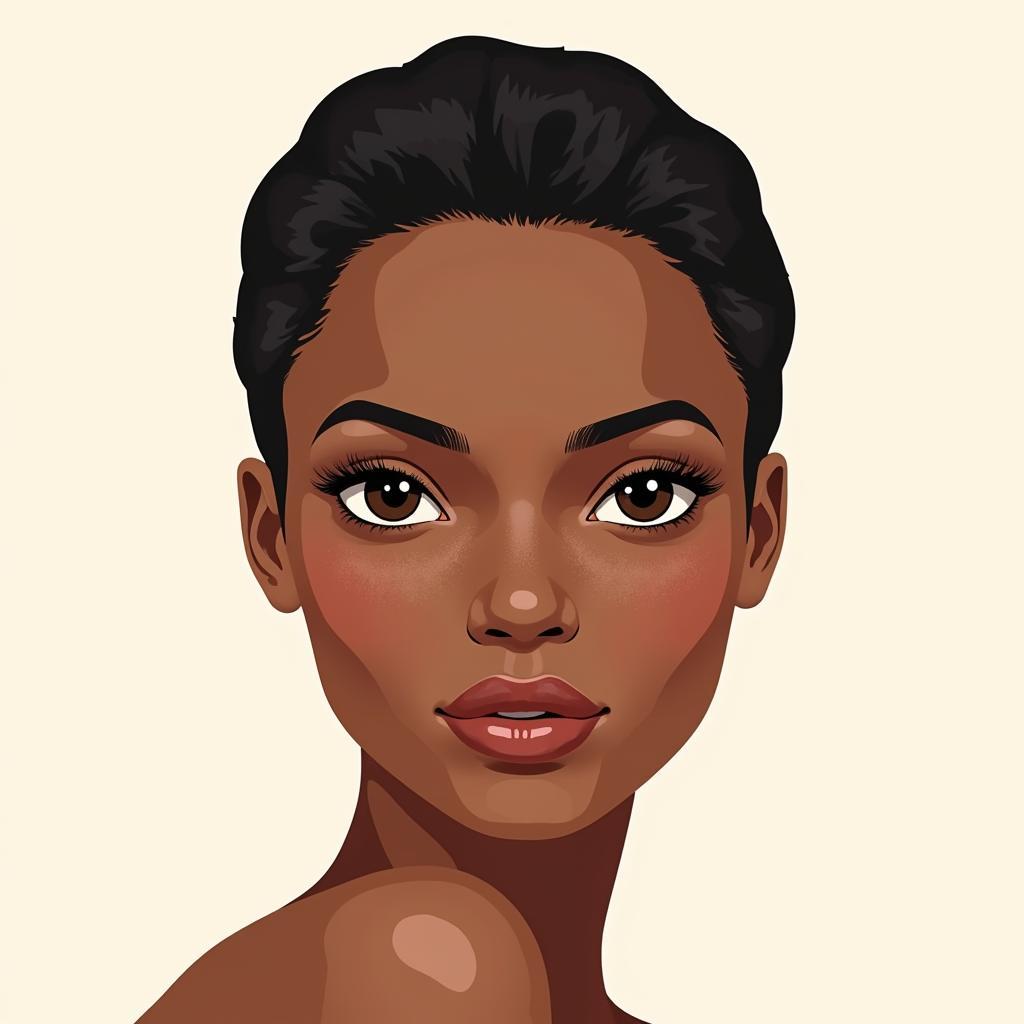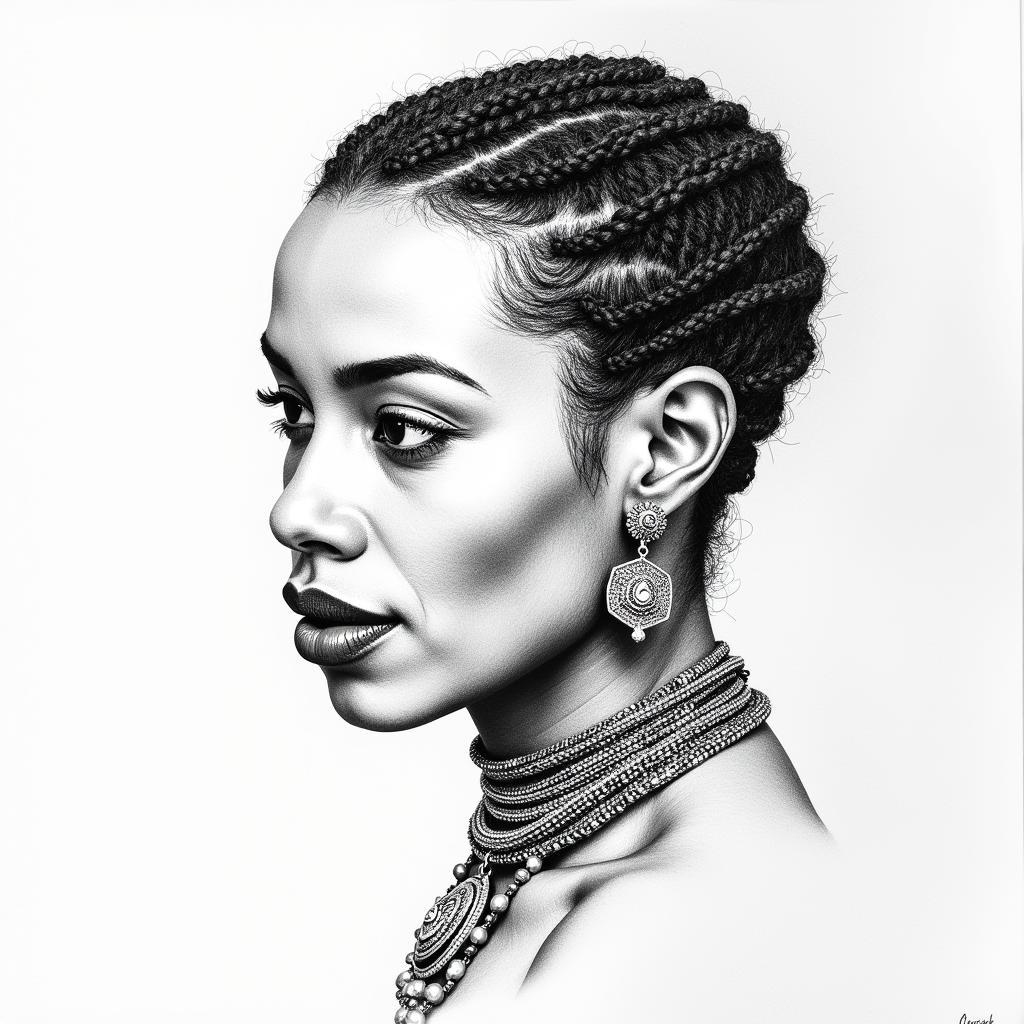Mastering the Art of African Face Drawing
Drawing the human face is a challenge for any artist, but capturing the unique beauty and diversity of African faces presents its own rewards and complexities. From the wide foreheads and almond-shaped eyes of the Maasai people to the intricate hairstyles and bold facial markings of the Yoruba tribe, African faces offer a fascinating study in human anatomy and cultural expression. This article delves into the world of African Face Drawing, exploring the artistic considerations, techniques, and cultural sensitivities involved in portraying the rich tapestry of African beauty.
Understanding the Nuances of African Facial Features
African faces, like the continent itself, are incredibly diverse. However, some common characteristics can help artists capture their essence:
- Bone Structure: Many African ethnicities have a pronounced bone structure, with high cheekbones, strong jaws, and sculpted features. Understanding these underlying structures is key to creating realistic and dimensional portraits.
- Skin Tones: Africa boasts a breathtaking range of skin tones, from the deepest ebony to rich, warm browns. Accurately representing these diverse hues requires a keen eye for color mixing and an appreciation for the interplay of light and shadow on different skin types.
- Hair Textures: From tightly coiled curls to braided styles that defy gravity, African hair is as varied as the people themselves. Capturing the texture, volume, and cultural significance of African hairstyles is essential for achieving authenticity in your drawings.
 African Face Proportions
African Face Proportions
Cultural Sensitivity and Representation
When drawing African faces, it’s crucial to be mindful of cultural sensitivities and avoid perpetuating harmful stereotypes.
- Diversity over Generalization: Africa is not a monolith. Each ethnic group possesses unique facial features and cultural expressions. Avoid creating generic “African” faces that erase this rich diversity. Research and depict specific ethnicities accurately and respectfully.
- Celebrating Individuality: Every face tells a story. Highlight the individual characteristics that make each subject unique, rather than conforming to stereotypical ideals.
- Context is Key: Consider the historical and cultural context of facial markings, hairstyles, and adornments. What might seem like a mere aesthetic choice can hold deep cultural significance.
Techniques for Drawing African Faces
Here are some tips for capturing the beauty of African faces in your artwork:
- Start with Structure: Begin by sketching the underlying bone structure, paying attention to the proportions specific to the ethnicity you are drawing.
- Layer Skin Tones: Build up skin tones gradually, using a variety of pencils or colors to create depth and richness. Don’t be afraid to experiment with different shades and undertones to capture the natural warmth and luminosity of African skin.
- Master Hair Texture: Use a variety of strokes and techniques to create different hair textures. Experiment with hatching, cross-hatching, and stippling to achieve realistic curls, braids, and afros.
- Capture the Eyes: The eyes are the window to the soul, and African eyes are renowned for their expressiveness. Pay close attention to the shape, size, and placement of the eyes, and don’t forget to add highlights to bring them to life.
- Add Cultural Details: Incorporate cultural elements like hairstyles, jewelry, and facial markings to add authenticity and tell a story through your art.
 Portrait of an African Woman
Portrait of an African Woman
Resources for Further Exploration
- African Culture Arts and Sport Network: Explore the diverse artistic expressions of African culture.
- English to African: A helpful resource for understanding linguistic diversity within Africa.
Conclusion
Drawing African faces is a journey of discovery, both artistic and cultural. By embracing the diversity, respecting cultural sensitivities, and honing your artistic skills, you can create captivating portraits that celebrate the unique beauty of Africa. Remember, each stroke of your pencil is an opportunity to learn, appreciate, and share the stories etched upon the faces of a continent.
